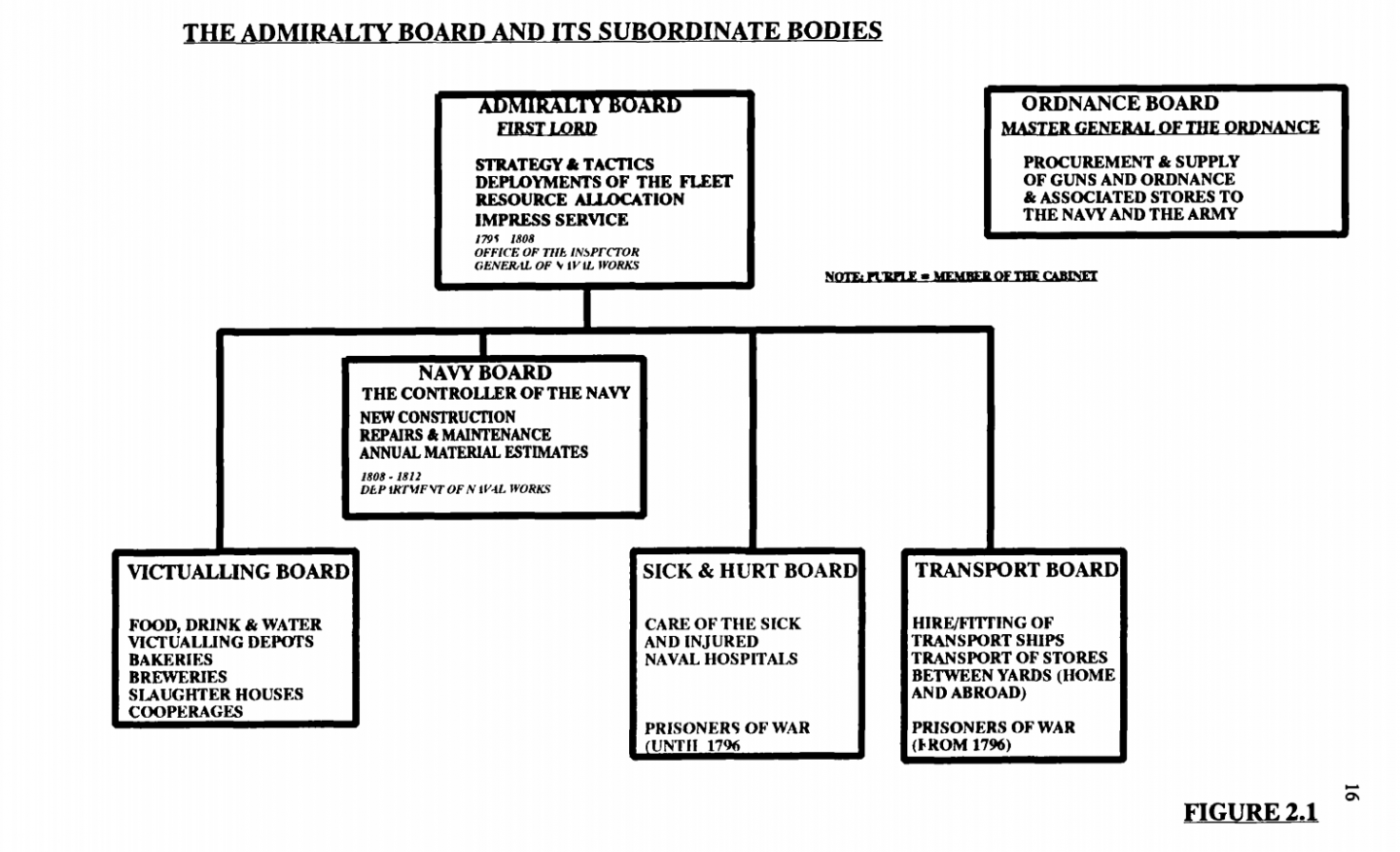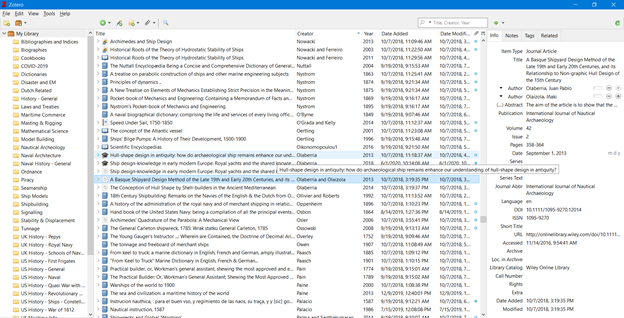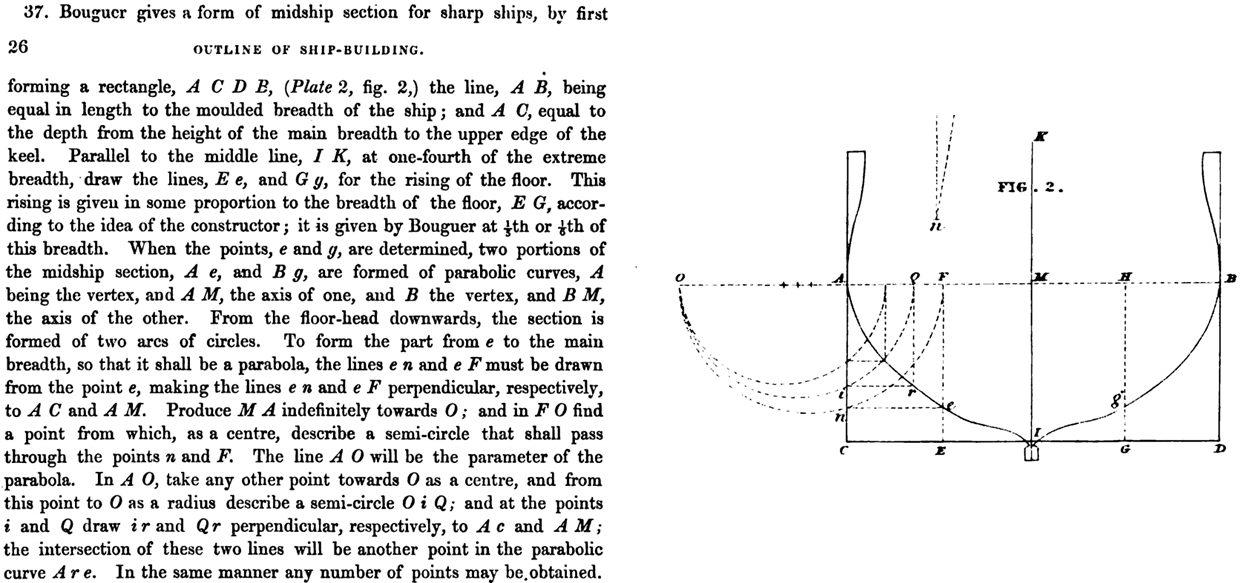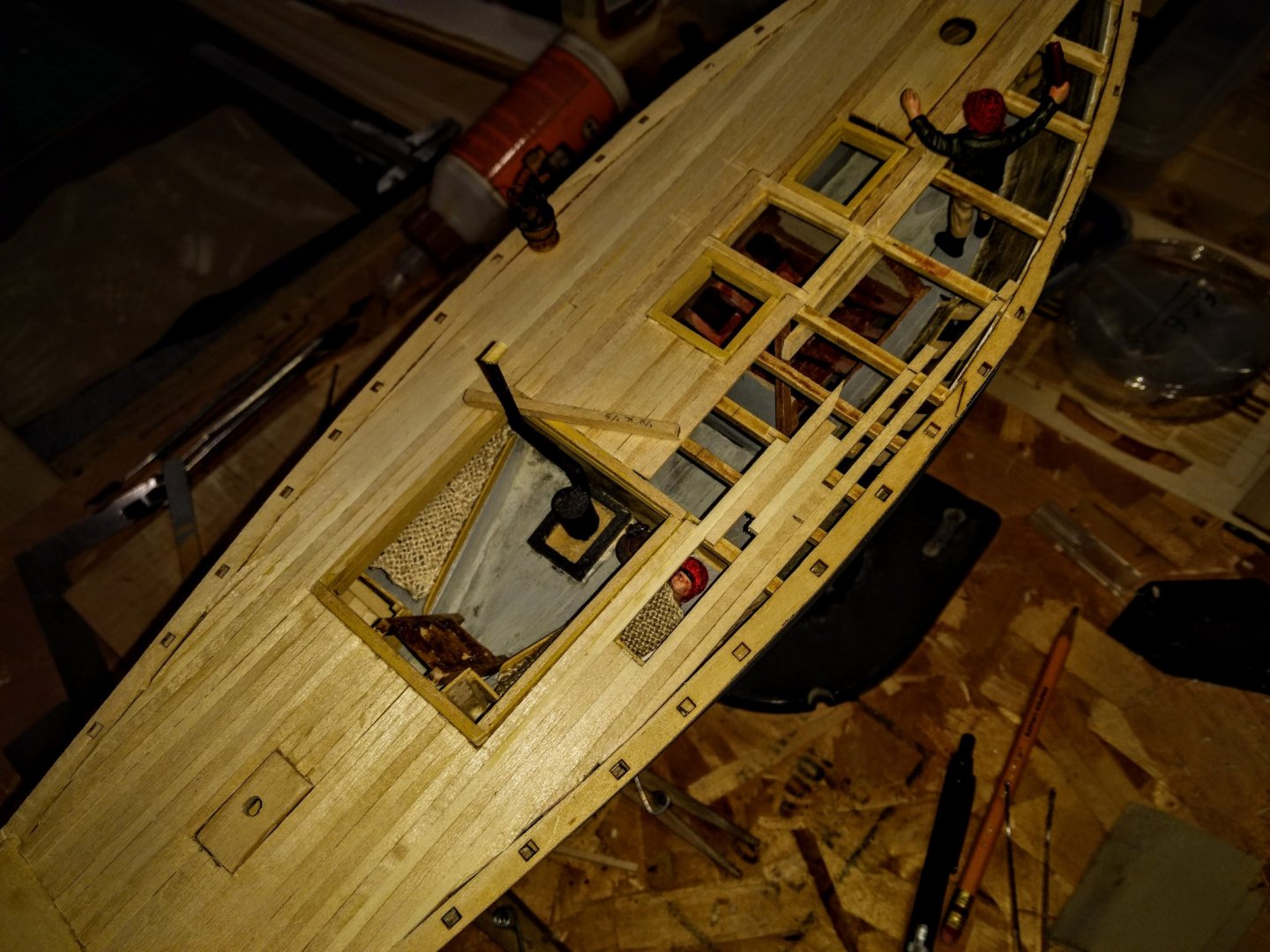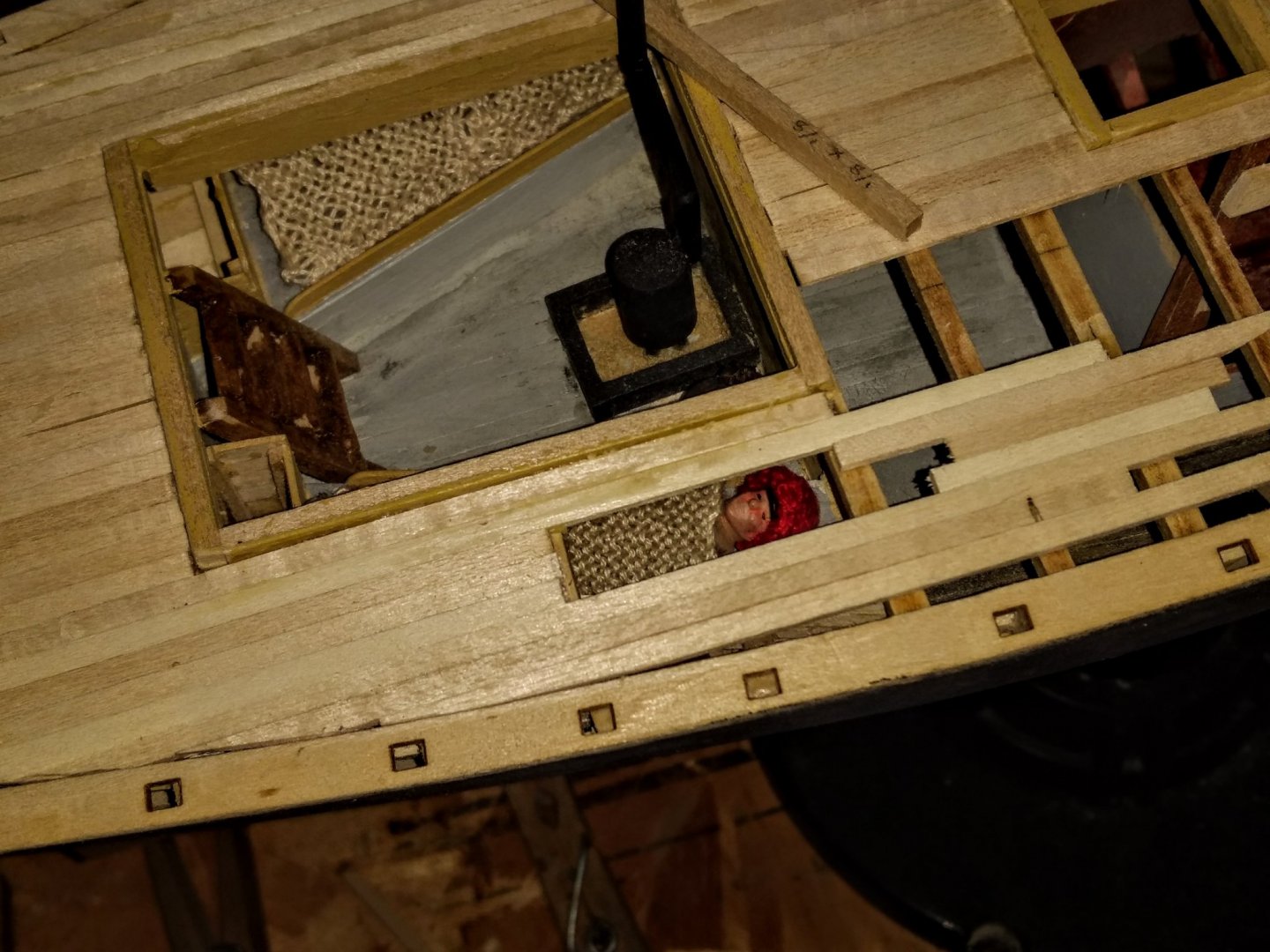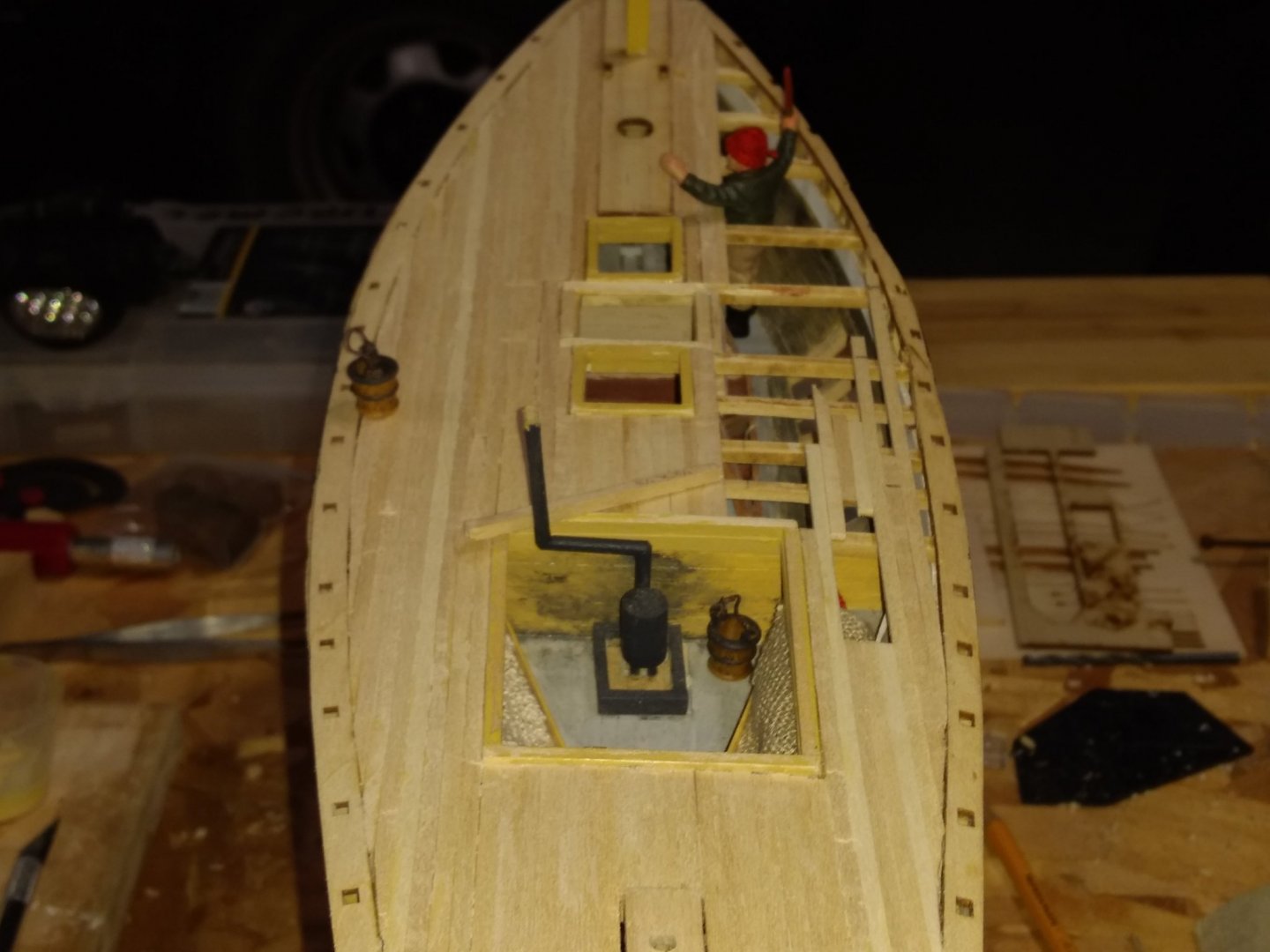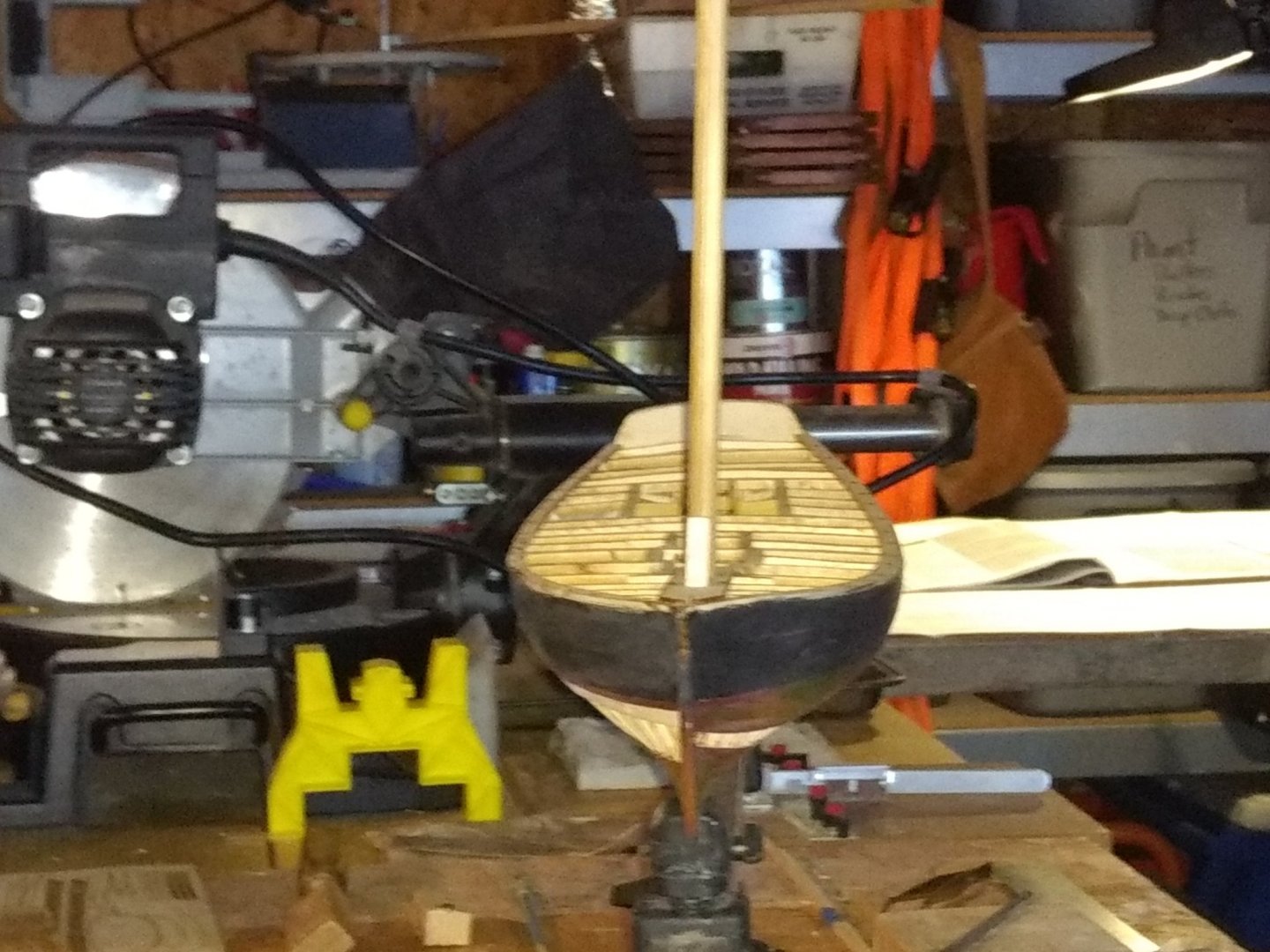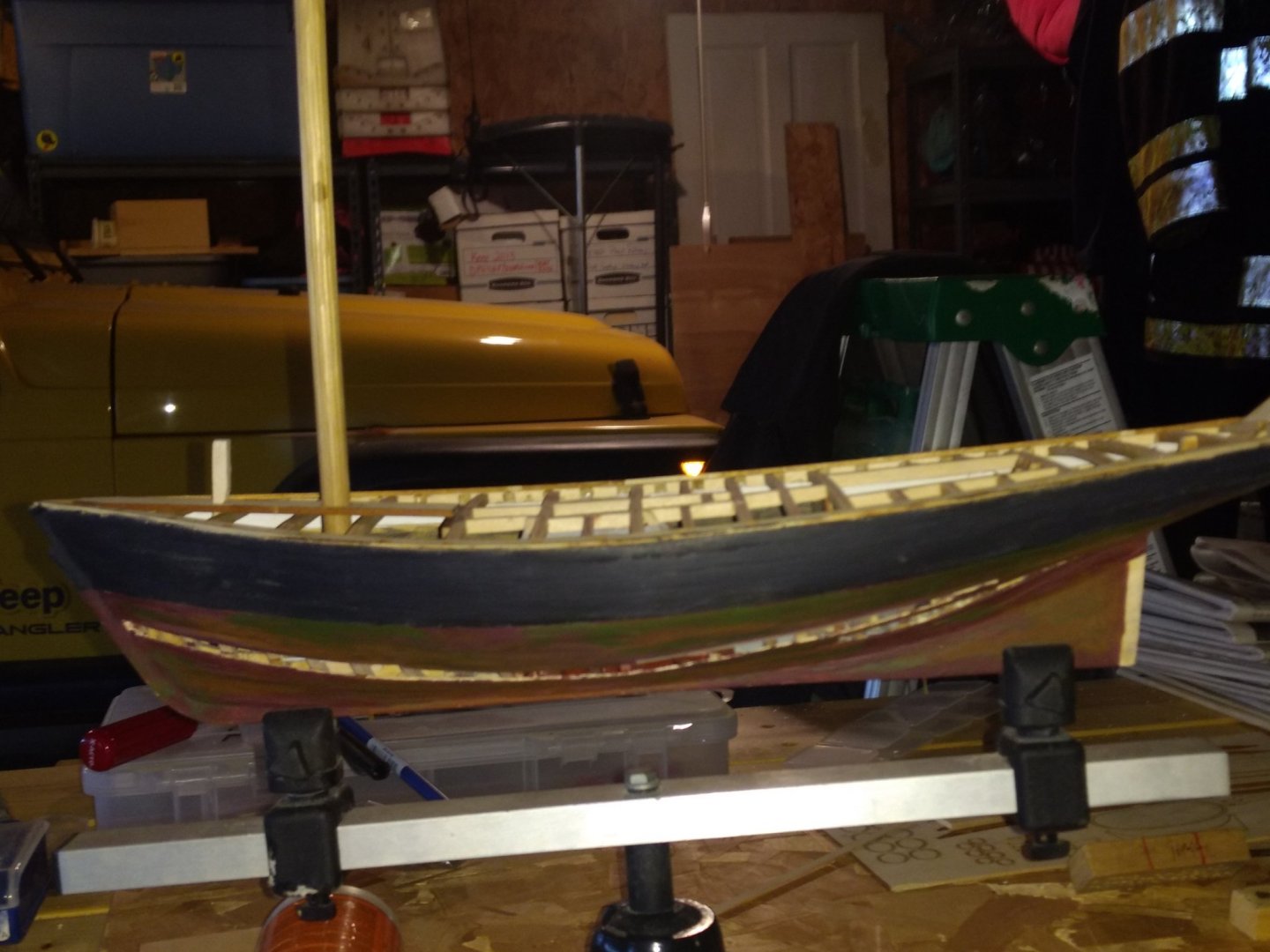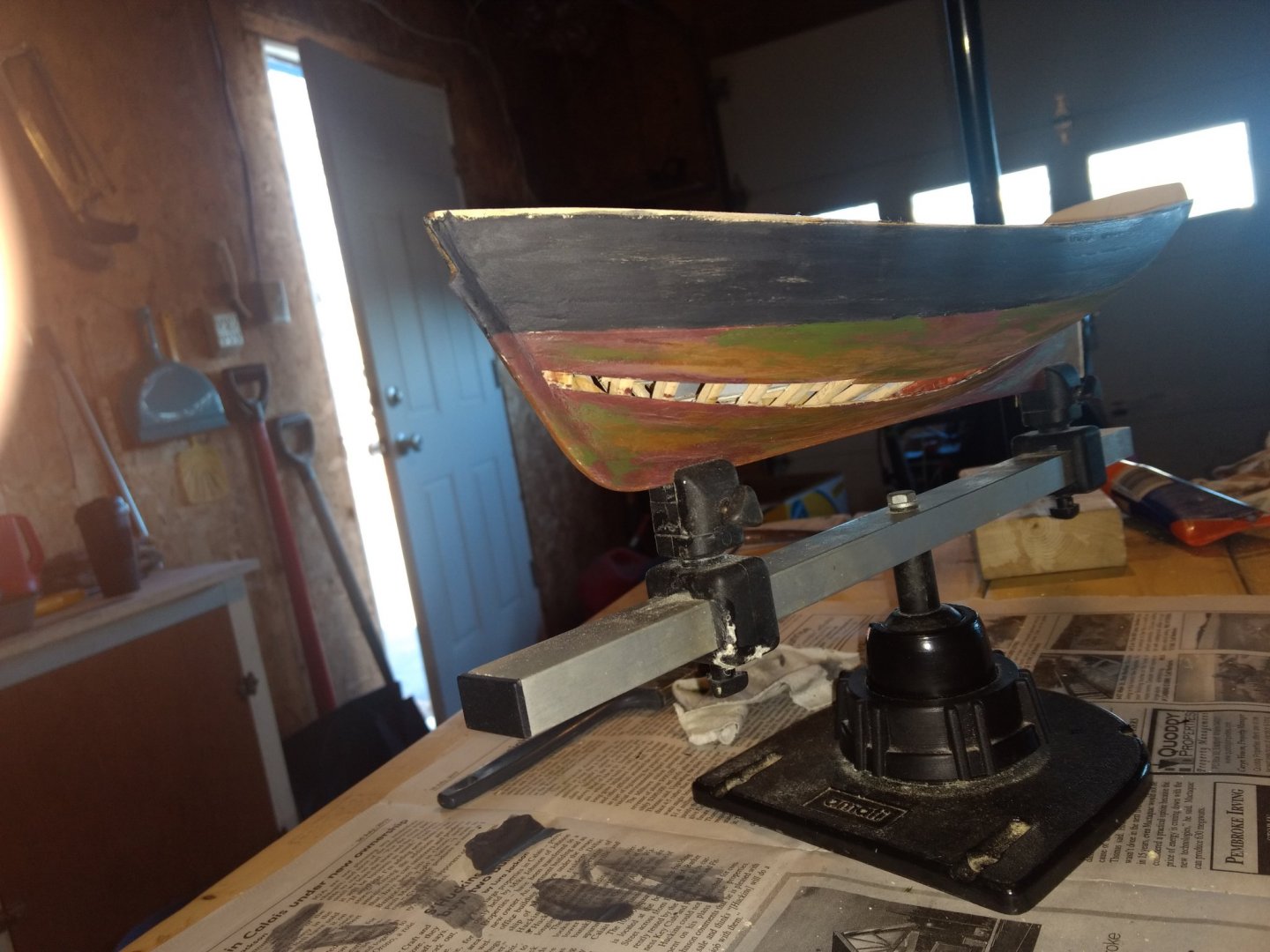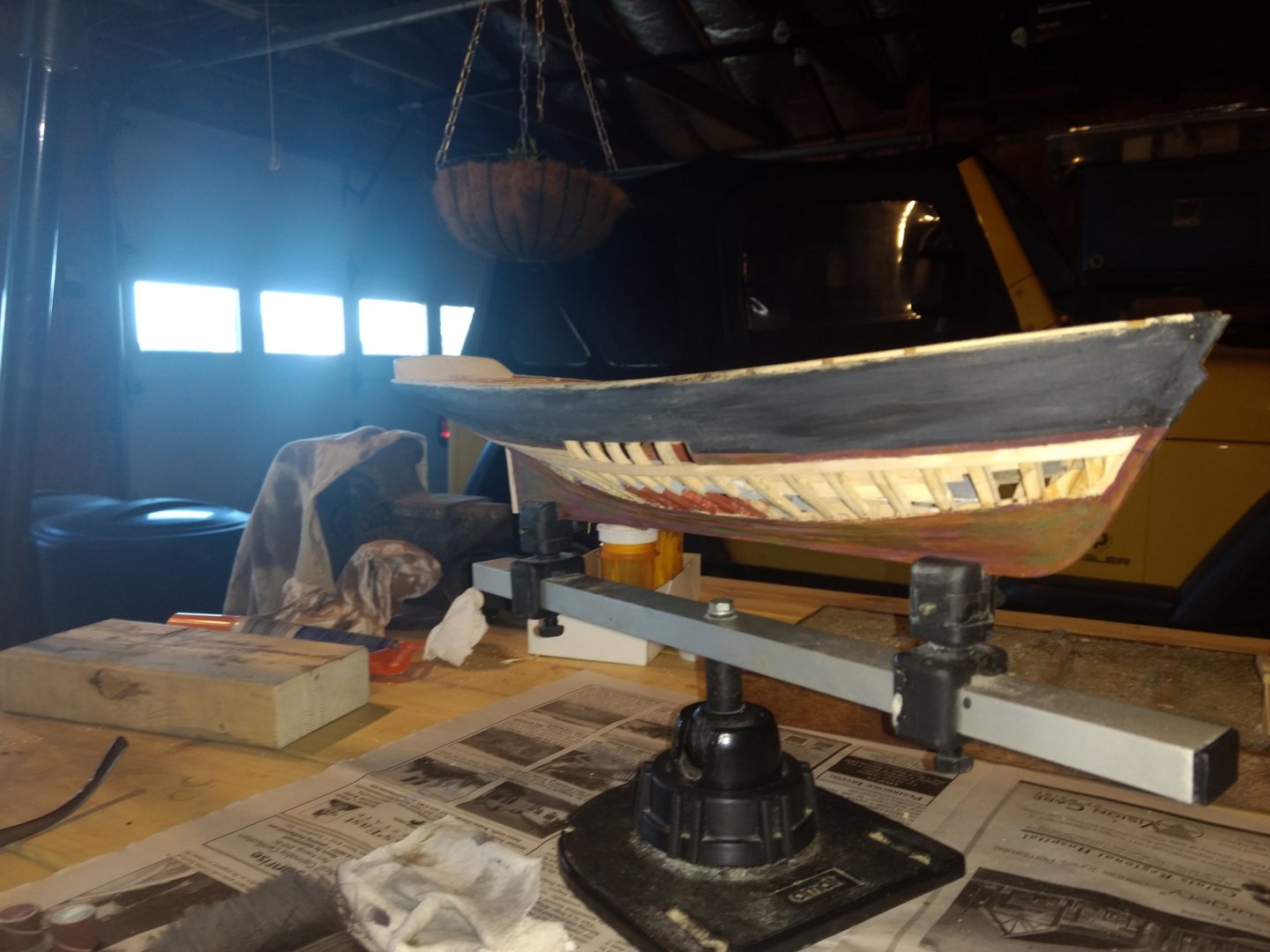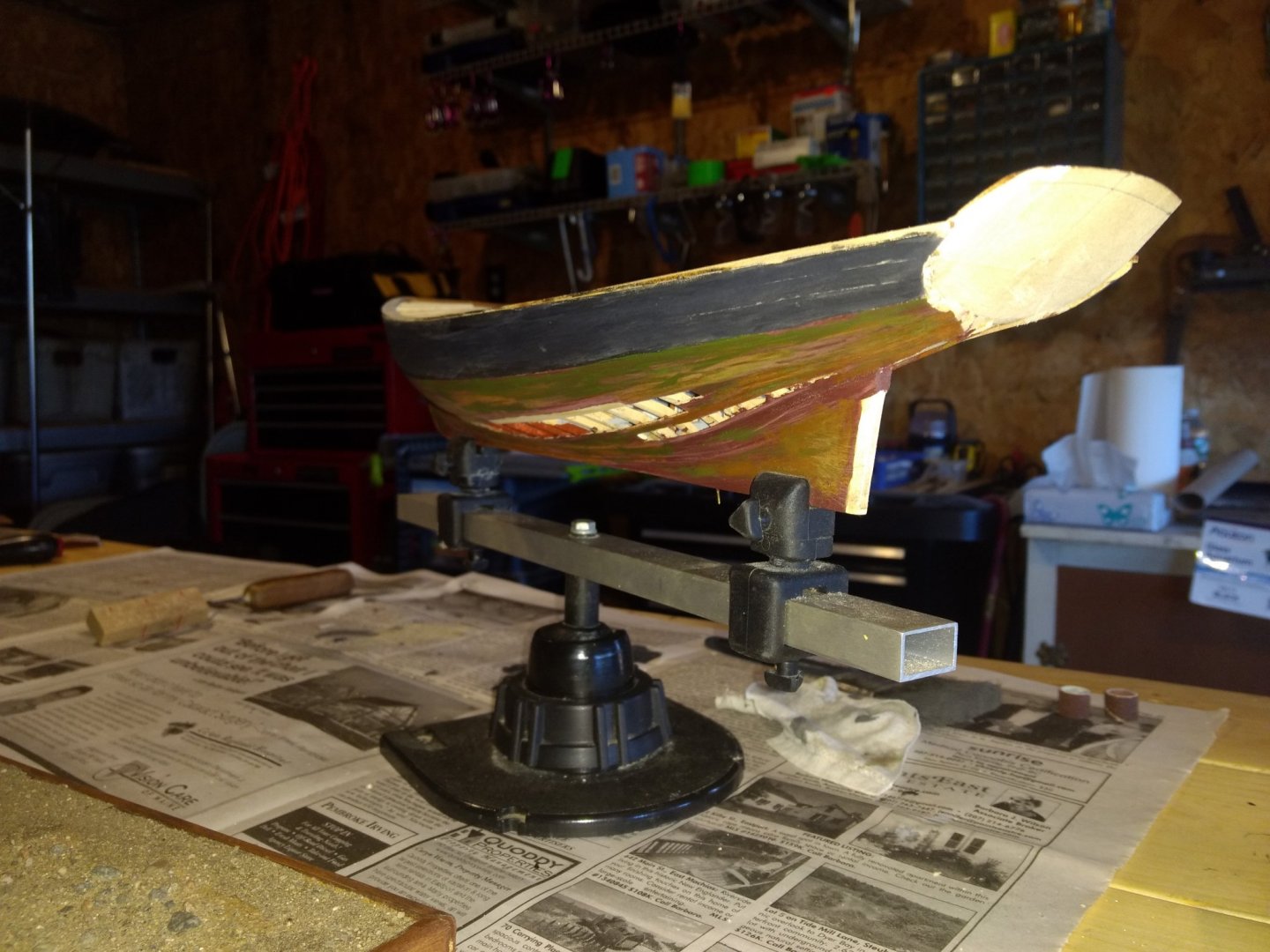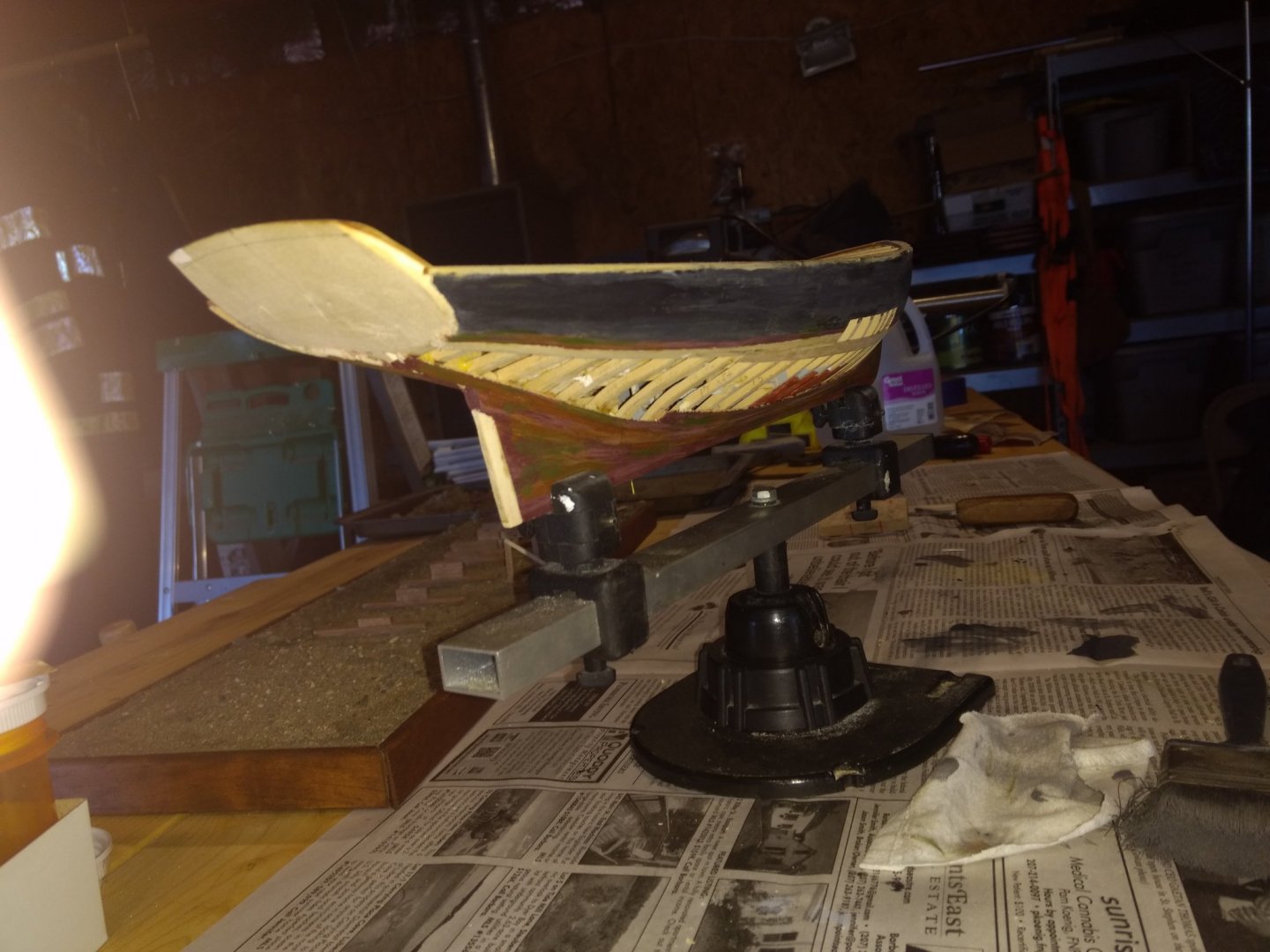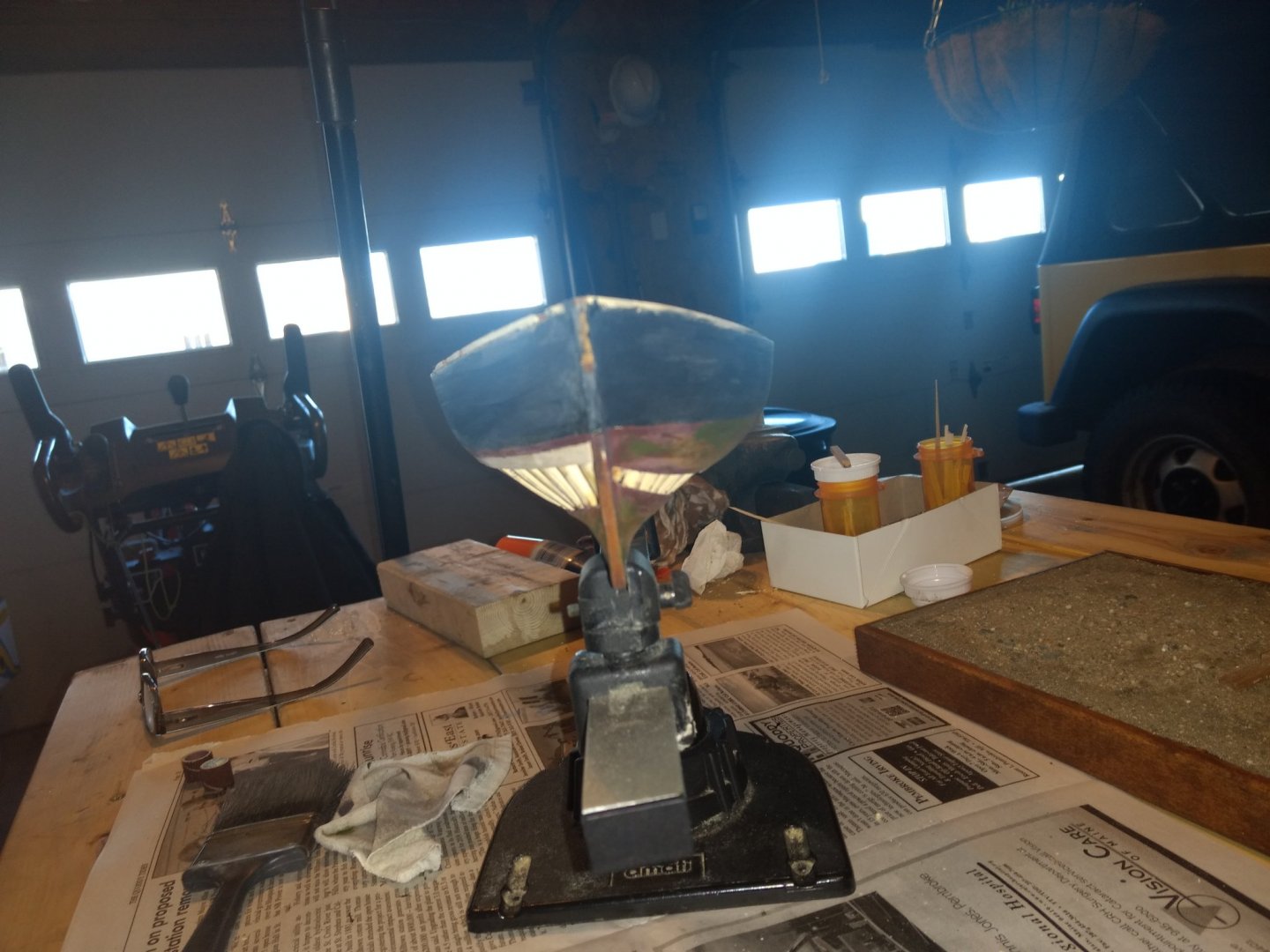-
Posts
3,132 -
Joined
-
Last visited
Content Type
Profiles
Forums
Gallery
Events
Everything posted by trippwj
-
Simpson, George. 1914. The Naval Constructor: A Vade Mecum of Ship Design for Students, Naval Architects, Shipbuilders and Owners, Marine Superintendents, Engineers and Draughtsmen. New York, D. Van Nostrand Company; [etc., etc.]. http://archive.org/details/navalconstructor00simprich.
-

Sorry to everyone back east...
trippwj replied to Patrick Matthews's topic in Modeling tools and Workshop Equipment
Here on the easternmost coast of the Us in Downeast Maine I awaken each moring to ascertain the conditions by gazing from my window to see it Canada (about a mile away) is in view across the bay. If not, it either foggy, raining or (shiver) snowing. This week we have had a brief but intense storm woth wind of 44 gusting to 62. Temperatures, alas, are falling rapidly - 70's a week back to barely above freezing in the forecast for today. My poor remaining petunias may finally surrender to the chilling effects - thus far, though, they have been persistent through short freezes and a light snow event which coated them overnit=ght before the temperature, schizophrenic and confused, rebounded into the mid 60's that same day. -
Welcome to MSW. I have recently been reading Friel, Ian. 1995. The Good Ship: Ships, Shipbuilding and Technology in England, 1200-1520. Baltimore: Johns Hopkins University Press. While it is slightly before the period of interest, he offers some wonderful information that you may find useful. Also see the research guide here for a brief introduction to Royal Naval Dockyards and the records of each dockyard held by the National Maritime Museum, followed by a selected bibliography of books in the Museum Library. I will need to do some further digging to see what I have for later periods. All the best -
-
Welcome aboard! Which schooner are you building and what scale are the plans?
-
I stumbled across this PhD Dissertation while seeking out something entirely different. The author takes a very deep dive into the Napoleanic era looking specifically at the Portsmouth shipyard but also the broader political, financial and organizational issues of the time. Exceptional compilation of statistical information on numbers and types of vessels, manpower, shipyard staffing and resource consumption and much much more. Even for the model builder, there may be some handy tidbits to consume. Plenty of tables and figures (so not all 343 pages are text.) I am still reading it in my spare time and find her writing style easy to digest. Wilkin, Felicity Susan. 1999. “The Application of Emerging New Technologies by Portsmouth Dockyard 1790-1815.” Phd, The Open University. http://oro.open.ac.uk/58009/. Here is one figure as an appetizer!
-
Beautiful work so far on the planking - each of my current bulds has ground to a screeching halt as i continue to struggle getting my 2D mind to grasp 3D bends and curves! I'll be watching to see how you handle some of the curves - and hopefully I can apply the tecchniques to my builds.
- 776 replies
-
- cheerful
- syren ship model
-
(and 1 more)
Tagged with:
-
Not work at all! The compilation and assessment of resource information is a hobby for me which grew out of my enjoymment of making small pieces of wood from larger pieces to then assemble into larger pieces. Here are a couple to get you started. Rasor, Eugene L. 2004. English/British Naval History to 1815: A Guide to the Literature. Greenwood Publishing Group. Rasor offers an extremely comprehensive assemblage of materials which may prove useful. Arranged topically, the 4,124 entries each include a brief commentary as well as extensive topical narratives for each section. From this you should be able to find items of interest. One downside is the lack of contemporary treatises (that is, written during the time period of interest). Goodwin, Peter. 1987. The Construction and Fitting of the English Man of War, 1650-1850. Annapolis, Md: Naval Institute Press. This book offers a deep dig into the construction and fitting out of a British warship - exceptionally detailed drawings and thoroughly researched. For more general info, there are many e-documents available as well. Brassey, Thomas. 1882. The British Navy: It’s Strength, Resources and Administration. Volume III - Opinions on the Shipbuilding Policy of the Navy. Vol. 3. 3 vols. London: Longmans, Green and Company. http://archive.org/details/in.ernet.dli.2015.284950. Clowes, William Laird, and Clements R. (Clements Robert) Markham. 1897. The Royal Navy, a History from the Earliest Times to the Present Volume 1. Vol. I. London : S. Low, Marston. http://archive.org/details/royalnavyhistory01clowuoft. Hervey, Frederic. 1779. The Naval History of Great Britain: From the Earliest Times to the Rising of the Parliament in 1779. Describing, Particularly, the Glorious Atchievements in the Last War. Also the Lives and Actions of Illustrious Commanders and Navigators. Vol. 2. 5 vols. W. Adlard. James, William. 1886. The Naval History of Great Britain, from the Declaration of War by France in 1793, to the Accession of George IV : A New Ed., with Additions and Notes, Bringing the Work down to 1827. Vol. 1. Vol. 1. London : R. Bentley. http://archive.org/details/navalhistoryofg01jame. Ralfe, James. 1820. The Naval Chronology of Great Britain; Or, An Historical Account of Naval and Maritime Events from the Commencement of the War in 1803 to the End of the Year 1816 ... Whitmore and Fenn. Winfield, Rif. 2007. British Warships in the Age of Sail, 1714-1792: Design, Construction, Careers and Fates. St. Paul, Minn: Seaforth Publishing / MBI Publishing Co. ———. 2008. British Warships in the Age of Sail, 1793-1817: Design, Construction, Careers and Fates. 2nd rev. ed. Barnsley [England]: Seaforth Pub. These two Winfield volumes offer some wonderful information about many of the classes (and individual members of each class) warships during the subject timeframe. He has more, I believe, extending the coverage. Hopefully, that is enough to get you started! Good luck and please feel free to let me know if there is something special you are seeking.
-
Your question -and the time period of interest - are broad, to say the least! Are you interested in the design, building methods, performance, manning, equipping, feeding, handling, careers &c? Zu Mondfeld is a handy reference though not universally applicable for your time period. Also, the difference between English and French or Dutch or Iberian could be (and was) significant. Let me see what I might offer after I get my first cup of coffee.
-
WHile I am not sure if it will meet your needs (or be too complex in what it does), there is a free FREE free program which I have been using for some time to catalogue and index my resources (print, websites, images, downloadable articles/books and so on). https://www.zotero.org/ Here is a screenshot of my install (currently contains some 2,100 entries).
-
I have 2 of the 3. They are quite useful, well written, documented and researched. His Fast Sailing picks up from Chapelle's "Search for Speed" (well, sort of). Not the historic journey of his "Merchant Sail" but a tighter focus on faster (and he addresses the definitional concerns around "fast") vessel form and function.
-
Found it in Fincham, John. 1852. An Outline of Ship-Building. In Four Parts ... Whittaker and Company. https://books.google.com/books?id=FadWAAAAcAAJ. From PDF page 46-47. I believe this is the treatise to which Fincham is refering Bouguer, Pierre. 1746. Traité du navire, de sa construction et de ses mouvemens. Jombert. http://archive.org/details/bub_gb_lh1ZBtRvAb0C.
-
Sharp, I'm afraid, is probably a highly subjective term. MacGregor offers some tantalizing thoughts about early written descriptions starting with Sutherland. He doesn't offer a descrption of sharp just some related design concepts for fast ships. The most tantalizing is a reference to Bouger's rules for fast ships described in Fincham's Outline of Shipbuilding Now to find my copy on Fincham...
-
This is one that I have heard of but have never been able to locate. According to R.C.Anderson in the Mariner's Mirror (1947), Marion Brewington advised him there was a copy at the US Navy as you noted above. According to Worldcat, there are 3 library copies of the NRG facsimile edition - at the LOC, the Smithsonian and the San Francisco Maritime National Historical Park, Maritime Research Center. There is a single table from the document in the NRJ volume 31. I will, of course, let you know if I am ever able to locate an additional copy (or an online version of the original). Good luck!
-
Abstract: For millennia wooden ships that plied the world’s oceans were plagued by biological problems. These were a multifaceted result of water temperature, salinity, levels of sunlight and the quantity of nutrients in the water. Vessel hulls, in time, collected seaweed affecting their speed and maneuverability. The ship’s longevity was impacted by infestations of two marine borers: the shipworm, a wormlike clam and tiny crustaceans known as gribbles. Combined they largely destroyed the integrity of marine timber structures, often working together to bore tunnels in wood to make it spongy and friable. Countless schemes were tried over time to solve sea flora and wood-rot problems. Some produced limited success until, in the eighteenth century, a relatively simple and practical solution was found, one that would shape maritime history. The evolution of that discovery ultimately affected two American icons, one a storied ship, the other a patriot, entrepreneur and an industrial opportunist. Norton, Louis Arthur. 2019. “Copper Sheathing, Industrial Espionage and an Eminent American Entrepreneur | Coriolis: The Interdisciplinary Journal of Maritime Studies.” Coriolis - Interdisciplinary Journal of Maritime Studies 9 (2): 37–44. https://ijms.nmdl.org/article/view/20133 Enjoy!
-
Welcome from "way Downeast". Love the lazy Susan idea - will have to see about getting one!
-
From all I have read the shot was all moved by hand. Every. Last. One. Them young lads had stamina!
-
In the case of the Lexington (originally a merchant brig), it would an error to try to apply the scantlings from the Establishment (see book by Yedlinsky and some extracts in the Humphrey's Papers). These scantlings were for a custom built war ship - a merchant vessel would likely have more space and perhaps less robust scantlings for the frames. You may have some luck by contacting the Mystic Seaport Museum as they have most of Davis's files in their archive. https://research.mysticseaport.org/coll/coll253/#head58871776
-
A warm (well, windy and brisk) welcome from Eastport.
About us
Modelshipworld - Advancing Ship Modeling through Research
SSL Secured
Your security is important for us so this Website is SSL-Secured
NRG Mailing Address
Nautical Research Guild
237 South Lincoln Street
Westmont IL, 60559-1917
Model Ship World ® and the MSW logo are Registered Trademarks, and belong to the Nautical Research Guild (United States Patent and Trademark Office: No. 6,929,264 & No. 6,929,274, registered Dec. 20, 2022)
Helpful Links
About the NRG
If you enjoy building ship models that are historically accurate as well as beautiful, then The Nautical Research Guild (NRG) is just right for you.
The Guild is a non-profit educational organization whose mission is to “Advance Ship Modeling Through Research”. We provide support to our members in their efforts to raise the quality of their model ships.
The Nautical Research Guild has published our world-renowned quarterly magazine, The Nautical Research Journal, since 1955. The pages of the Journal are full of articles by accomplished ship modelers who show you how they create those exquisite details on their models, and by maritime historians who show you the correct details to build. The Journal is available in both print and digital editions. Go to the NRG web site (www.thenrg.org) to download a complimentary digital copy of the Journal. The NRG also publishes plan sets, books and compilations of back issues of the Journal and the former Ships in Scale and Model Ship Builder magazines.



